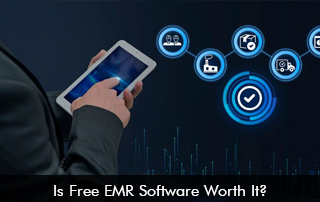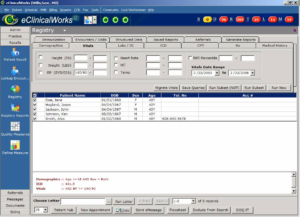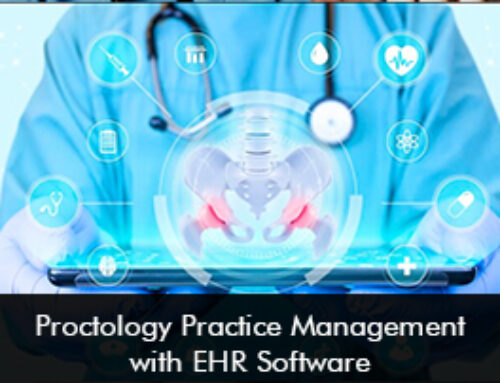As with any software, there are both free and paid options available, each with its own set of advantages and disadvantages. In this blog, we will explore the concept of free EMR software. We evaluate its worth by examining the pros and cons.
Understanding Free EMR Software
Free EMR software, also known as open-source EMR software, refers to electronic medical record systems that are available at no cost. These systems are typically developed and maintained by a community of developers. This makes the source code open to modification and customization by users. The appeal of free EMR software lies in its accessibility and affordability. It makes it an attractive option for small healthcare practices, community clinics, and resource-limited healthcare settings.
Pros
Cost Savings: The most apparent advantage of free EMR software is the cost savings. Small practices and non-profit healthcare organizations can benefit from a comprehensive EMR system. All this without the financial burden of licensing fees.
Customization: Free EMR software allows users to modify the source code to suit their specific needs. This high degree of customization can result in a tailored system that aligns with the unique workflow and requirements of a healthcare practice.
Community Support: The open-source nature of free EMR software means that a community of developers and users actively contributes to its development and support. This collaborative approach often leads to regular updates and improvements.
Accessibility: Free EMR software makes EMR technology accessible to a broader range of healthcare providers. This includes those in underserved areas. This can contribute to the digitalization of medical records, even in resource-limited settings.
No Vendor Lock-In: With free EMR software, healthcare providers are not locked into a particular vendor’s ecosystem. This allows for more flexibility in the selection of other healthcare IT systems, such as laboratory or billing software.
Cons
Limited Features: Free EMR software may lack certain advanced features and functionalities that are available in paid systems. This can limit the scope of what healthcare providers can achieve with the software.
Complexity: Customization of free EMR software can be complex and requires expertise in software development. Smaller practices with limited IT resources may struggle with these customizations.
Support and Maintenance Costs: While the software itself is free, healthcare providers may incur costs for technical support, updates, and maintenance. These costs can add up over time.
Data Security and Privacy: Free EMR software may not provide the same level of data security and privacy safeguards as paid systems. This can be a concern, especially considering the sensitive nature of patient health information.
Learning Curve: Implementing and customizing free EMR software can involve a steep learning curve, both for IT personnel and healthcare providers. This transition period can lead to temporary disruptions in workflow.
Is Free EMR Software Worth It?
The worth of free EMR software depends on the specific needs and circumstances of the healthcare practice. Here are some key factors to consider when evaluating the suitability of free EMR software:
Budget: For practices with limited budgets, free EMR software can be an attractive option. It allows healthcare providers to access essential EMR functionality without the upfront licensing costs associated with paid systems.
Customization Needs: Practices with highly specialized workflows or unique requirements may benefit from free EMR software’s high degree of customization. Customization can tailor the system to precisely match the practice’s needs.
IT Expertise: Practices with in-house IT expertise or access to technical resources may find free EMR more manageable. The ability to modify the source code and maintain the system is a significant advantage.
Community Support: The level of support and engagement within the free EMR software community can impact its worth. Active communities tend to provide regular updates, patches, and solutions to common issues.
Compliance Requirements: Healthcare practices subject to strict data security and privacy regulations may need to carefully consider whether free EMR software meets these requirements. Compliance can be a critical factor in the decision-making process.
Scalability: Consider the future growth and scalability of the practice. Free EMR software may have limitations in handling larger volumes of data or expanding services, so this should be taken into account when evaluating its worth.
Support and Maintenance Costs: While the software itself is free, there may be ongoing costs associated with support, maintenance, and training. Practices should factor these costs into their decision-making.
Best Practices for Implementation
If a healthcare practice decides that free EMR is the right choice for their needs, they should follow these best practices to ensure a successful implementation:
Thorough Needs Assessment: Begin by conducting a thorough needs assessment to identify the specific requirements and goals of the practice.
User Training: Invest in comprehensive user training to ensure that all staff members are proficient in using the system effectively.
Data Migration: Plan and execute a seamless data migration process, ensuring that existing patient records are accurately and securely transferred to the new system.
Security Measures: Implement robust data security and privacy measures to safeguard patient information and ensure compliance with regulations.
Documentation: Keep detailed documentation of customizations, configurations, and changes made to the software to facilitate support and future updates.
Regular Updates: Stay engaged with the software’s community to access and apply regular updates and security patches.
Continuous Evaluation: Continuously evaluate the system’s performance, user satisfaction, and alignment with practice objectives.








